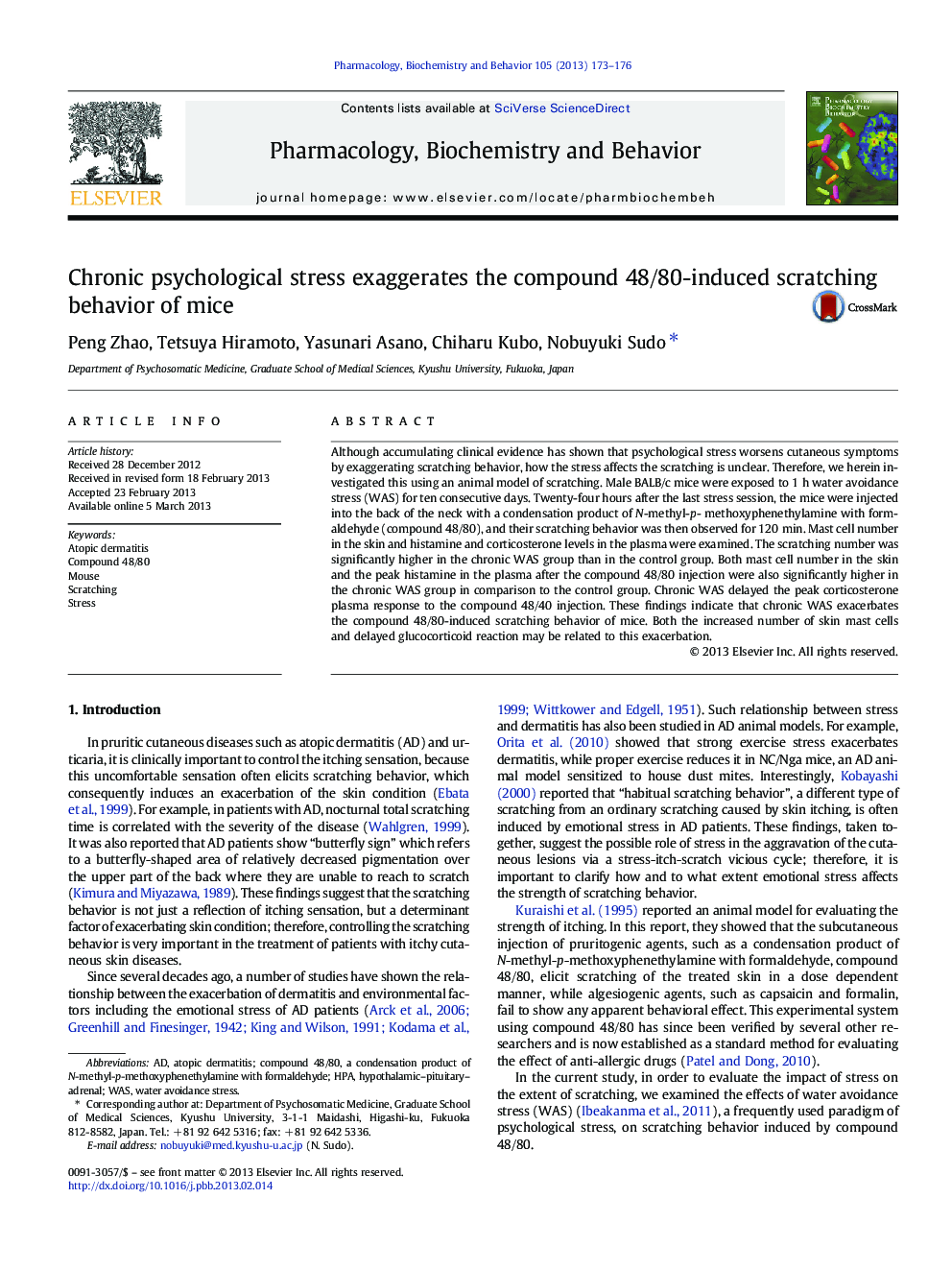| Article ID | Journal | Published Year | Pages | File Type |
|---|---|---|---|---|
| 8352147 | Pharmacology Biochemistry and Behavior | 2013 | 4 Pages |
Abstract
Although accumulating clinical evidence has shown that psychological stress worsens cutaneous symptoms by exaggerating scratching behavior, how the stress affects the scratching is unclear. Therefore, we herein investigated this using an animal model of scratching. Male BALB/c mice were exposed to 1Â h water avoidance stress (WAS) for ten consecutive days. Twenty-four hours after the last stress session, the mice were injected into the back of the neck with a condensation product of N-methyl-p- methoxyphenethylamine with formaldehyde (compound 48/80), and their scratching behavior was then observed for 120Â min. Mast cell number in the skin and histamine and corticosterone levels in the plasma were examined. The scratching number was significantly higher in the chronic WAS group than in the control group. Both mast cell number in the skin and the peak histamine in the plasma after the compound 48/80 injection were also significantly higher in the chronic WAS group in comparison to the control group. Chronic WAS delayed the peak corticosterone plasma response to the compound 48/40 injection. These findings indicate that chronic WAS exacerbates the compound 48/80-induced scratching behavior of mice. Both the increased number of skin mast cells and delayed glucocorticoid reaction may be related to this exacerbation.
Keywords
Related Topics
Life Sciences
Biochemistry, Genetics and Molecular Biology
Biochemistry
Authors
Peng Zhao, Tetsuya Hiramoto, Yasunari Asano, Chiharu Kubo, Nobuyuki Sudo,
